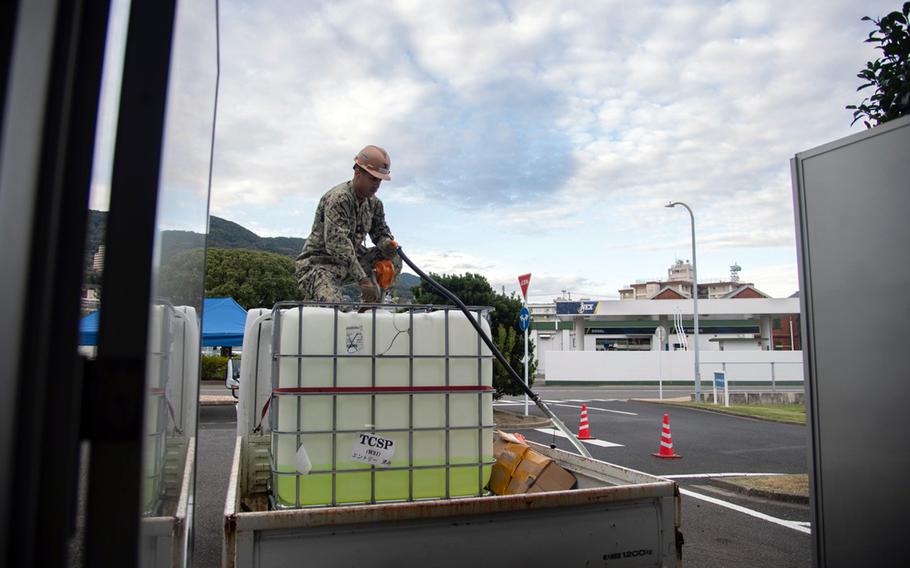
Petty Officer 3rd Class Justin Rodriguezmelendez, a builder with Naval Facilities Engineering Command Far East, Public Works Department, refills gas cans for base generators during the Black Start exercise at Sasebo Naval Base, Japan, Nov. 20, 2024. (Sophia Bumps/U.S. Navy)
Sasebo Naval Base recently became the first Navy base in Japan to successfully test its ability to maintain electrical power through backup generators in case it’s cut off from the local grid, the service said.
The exercise, dubbed Black Start, was a “resounding success,” Sasebo commander Capt. Michael Fontaine told Stars and Stripes by email Wednesday.
“Energy resilience is critical to an installation and the exercise successfully tested [Sasebo Naval Base’s] backup power sources and our ability to sustain operations during a power interruption,” he said. “It also highlighted our synergy with the Japan Self-Defense Forces and the local Japanese community when dealing with contingencies.”
Black Start, an exercise mandated by Congress, focuses on the ability of the backup systems to start independently and transfer and maintain the electrical load until energy from off the installation is restored, according to the Nov. 20 news release.
Sasebo was the first base in Japan to complete the exercise, Fontaine said in the release. That meant working carefully with local utility Kyushu Electric Power Co. to ensure the exercise did not affect the power grid, he said.
Sasebo had to carry out the exercise only once, base spokesman Aki Nichols said by email Wednesday.
At approximately 9:30 a.m. Nov. 20, the Public Works Department cut power to the main base, No. 2 Dry Dock facility, Dragon Vale and Fiddler’s Green housing areas and Nimitz Park, according to the release.
Black Start began with no notice at those five sites and lasted 12 hours, Sasebo Public Works Officer Lt. Cmdr. Tyson Baca said by email Wednesday.
Following the power loss, mission-essential facilities, such as the naval base and Forward Deployed Naval Forces headquarters, mission-critical functions and emergency services, shifted to backup generators and resumed normal operations, the release said.
The exercise involved more than flipping a switch. Balancing 66,000 volts while ensuring backup power is available for the base comes with a high risk, “but our team was able to safely and successfully assess the installation’s energy infrastructure and policies and identify ways to improve them in the future,” Baca said.
Black Start identifies vulnerabilities and potential risks to the installation during real-world scenarios, and potential risks to the commercial energy grid if a “black start” event ever occurs, according to the Navy release.